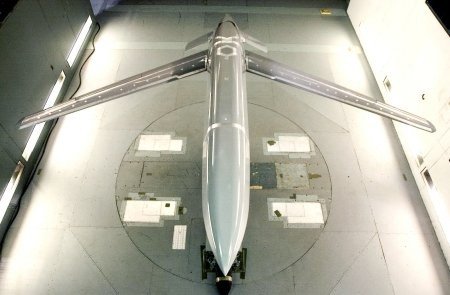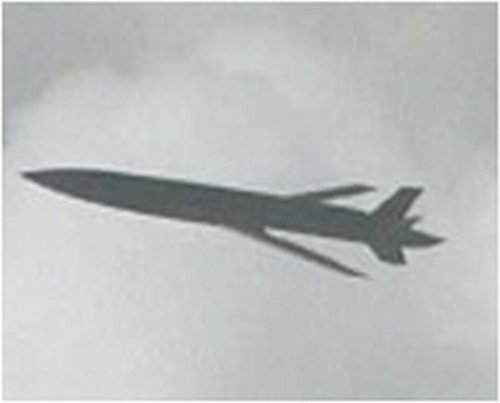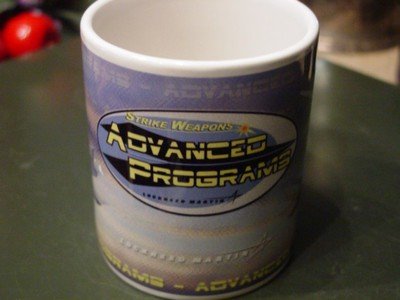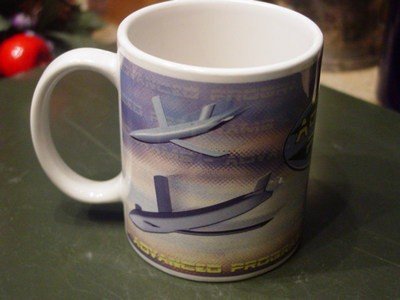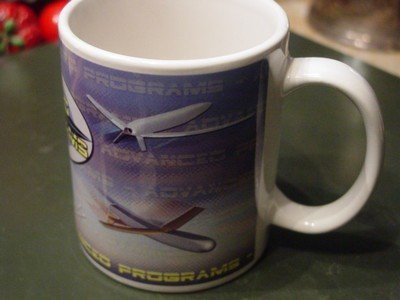You are using an out of date browser. It may not display this or other websites correctly.
You should upgrade or use an alternative browser.
You should upgrade or use an alternative browser.
Lockheed Top Cover
- Thread starter donnage99
- Start date
- Joined
- 3 June 2011
- Messages
- 18,339
- Reaction score
- 12,242
donnage99 said:Can we also include the Lockheed Top Cover, which operates on the same foundation, cruise missile/UAV hibrid.
What is this? ???
donnage99
ACCESS: Top Secret
- Joined
- 16 June 2008
- Messages
- 1,355
- Reaction score
- 870
I meant that since both are from lockheed, operating on the same basic foundation, both shown and then went silent (in the case of Top Cover, they shown it in early 2006 and said that it would begin flight test within 6 months, but after that I didn't hear anything else).sferrin said:What is this? ???
- Joined
- 1 April 2006
- Messages
- 11,397
- Reaction score
- 10,314
classic article from Flight International
DATE:12/07/05
SOURCE:Flight International
Lockheed unveils hybrid cruise missile/UAV plans
Manufacturer also highlights development of strike weapon and new guided bomb
Lockheed Martin has unveiled plans to demonstrate a “persistent surveillance” hybrid cruise missile/unmanned air vehicle next year. Named Top Cover, the air-launched, forward-swept-wing design will have an endurance of over 24h at altitudes around 5,000ft (1,500m) and is intended to operate as a cruise missile, lethal UAV or disposable surveillance UAV.
Speaking exclusively to Flight International, Lockheed officials have also revealed concepts for a new penetrating guided bomb using the warhead from the company’s AGM-158 Joint Air-to-Surface Standoff Missile (JASSM); a UAV development of the Longshot strap-on wing-kit to provide battle damage assessment; and updated information on its proposed 2,270kg (5,000lb) “extreme range” (XR) version of JASSM.
The Top Cover persistent surveillance UAV is being developed as Lockheed’s bid for the US Air Force Research Laboratory’s Area Dominance Programme advanced concept technology demonstration (ACTD). Sensor options include ground moving-target indication radar, infrared and electro-optical cameras, acoustic sensors and signals intelligence arrays. Various warhead options are also being considered, including directed energy systems. Combined warhead and sensor payloads could be carried by the same vehicle, or mixed operations conducted using swarms of warhead- and sensor-equipped systems to locate, identify and engage targets.
The vehicle will weigh 200kg, including a maximum 20kg payload, with its wings folding forward against the fuselage in carriage mode before deploying on release from a host aircraft. It will be powered by a single turbofan engine. Its planned unit cost of around $200,000 will allow it to be treated as expendable, says Jim Pappafotis, director of advanced programmes at Lockheed Martin Missiles & Fire Control.
Lockheed has self-funded development of the Top Cover system since late 2003 using its experience in the USAF’s Affordable Moving Surface Target Engagement ACTD in co-operation with Northrop Grumman. This saw the companies build and fly the air-launched, On-target Weapon Long-range air vehicle, which underwent flight tests in late 2002 and early 2003, but was shelved.
Low-speed windtunnel testing of a Top Cover model was conducted in January to verify its forward-swept-wing design in fully extended configuration. Studies of designs with more sweep were also made, but the selected arrangement provided a more efficient balance between endurance and air vehicle stability, says Pappafotis. Development of an aerodynamics database was completed last March and work to develop a new-generation autopilot will be completed by September, ahead of next year’s flight demonstration.
Lockheed says its pursuit of the Top Cover system and other hybrid concepts seeks to re-apply technology developed through a more than $1 billion government investment in the JASSM programme. The work also reflects the increasingly blurred divide between the roles of missiles and UAVs in the implementation of network-centric operations, says Randy Bigum, vice-president strike weapons.
Plans for a new 450kg penetrating guided bomb would re-use JASSM’s existing warhead, with the glide weapon also fitted with the Longshot wing-kit to provide it with a stand-off range of around 100km (54nm). The proposed UAV version of the Longshot range-extension kit would be stabilised by the addition of a tail and programmed to fly an orbiting profile, with its low-cost camera and datalink providing post-strike intelligence data.
Development of the more than 1,850km-range XR cruise missile is continuing apace, with Lockheed revealing it began windtunnel testing last February with a 5% scale model of the JASSM derivative. With an overall length of 6.3m (20.8ft), compared with the JASSM-ER’s 4.2m, the XR features a fixed canard foreplane and folding main wing. The canard is required to ensure the single turbofan-powered missile maintains a stable flight profile and to compensate for the weight of the Lockheed-designed 540kg warhead. Bigum says the design “preserves the low observable characteristics that we have brought in from the JASSM, even with the canards”.
Detailed concept work began in early 2004 with the aim of providing an alternative means of engaging and destroying hardened and deeply buried targets, with the company-funded development now being pitched as a potential new-start USAF ACTD for fiscal year 2007. About 80% of the JASSM design’s electronics would be reapplied in the basic XR missile, although Pappafotis says the project provides an opportunity to explore alternative warheads, datalinks, non-co-operative target identification technology and precision guidance systems with reduced reliance on GPS. The missile would not use a terminal seeker under current concepts, instead receiving target updates from USAF Northrop E-8 JSTARS aircraft via datalink or satellite.
The weapon’s rocket-boosted penetrator warhead will have a velocity of about 2,300ft/s (700m/s), says Pappafotis, who adds that the charge will be “going in [at] better than Mach 2”. If fielded, the XR cruise missile would be carried by the USAF’s Northrop B-2 and Boeing B-52 bombers, which, respectively, could carry up to eight and four weapons internally and two and eight weapons externally. Boeing’s F-15 fighter is another possible candidate host platform, says Pappafotis, with the type viewed as a potential trials aircraft if the proposed ACTD gains approval.
http://www.flightglobal.com/articles/2005/07/12/200272/lockheed-unveils-hybrid-cruise-missileuav-plans.html
PETER LA FRANCHI / ORLANDO
DATE:12/07/05
SOURCE:Flight International
Lockheed unveils hybrid cruise missile/UAV plans
Manufacturer also highlights development of strike weapon and new guided bomb
Lockheed Martin has unveiled plans to demonstrate a “persistent surveillance” hybrid cruise missile/unmanned air vehicle next year. Named Top Cover, the air-launched, forward-swept-wing design will have an endurance of over 24h at altitudes around 5,000ft (1,500m) and is intended to operate as a cruise missile, lethal UAV or disposable surveillance UAV.
Speaking exclusively to Flight International, Lockheed officials have also revealed concepts for a new penetrating guided bomb using the warhead from the company’s AGM-158 Joint Air-to-Surface Standoff Missile (JASSM); a UAV development of the Longshot strap-on wing-kit to provide battle damage assessment; and updated information on its proposed 2,270kg (5,000lb) “extreme range” (XR) version of JASSM.
The Top Cover persistent surveillance UAV is being developed as Lockheed’s bid for the US Air Force Research Laboratory’s Area Dominance Programme advanced concept technology demonstration (ACTD). Sensor options include ground moving-target indication radar, infrared and electro-optical cameras, acoustic sensors and signals intelligence arrays. Various warhead options are also being considered, including directed energy systems. Combined warhead and sensor payloads could be carried by the same vehicle, or mixed operations conducted using swarms of warhead- and sensor-equipped systems to locate, identify and engage targets.
The vehicle will weigh 200kg, including a maximum 20kg payload, with its wings folding forward against the fuselage in carriage mode before deploying on release from a host aircraft. It will be powered by a single turbofan engine. Its planned unit cost of around $200,000 will allow it to be treated as expendable, says Jim Pappafotis, director of advanced programmes at Lockheed Martin Missiles & Fire Control.
Lockheed has self-funded development of the Top Cover system since late 2003 using its experience in the USAF’s Affordable Moving Surface Target Engagement ACTD in co-operation with Northrop Grumman. This saw the companies build and fly the air-launched, On-target Weapon Long-range air vehicle, which underwent flight tests in late 2002 and early 2003, but was shelved.
Low-speed windtunnel testing of a Top Cover model was conducted in January to verify its forward-swept-wing design in fully extended configuration. Studies of designs with more sweep were also made, but the selected arrangement provided a more efficient balance between endurance and air vehicle stability, says Pappafotis. Development of an aerodynamics database was completed last March and work to develop a new-generation autopilot will be completed by September, ahead of next year’s flight demonstration.
Lockheed says its pursuit of the Top Cover system and other hybrid concepts seeks to re-apply technology developed through a more than $1 billion government investment in the JASSM programme. The work also reflects the increasingly blurred divide between the roles of missiles and UAVs in the implementation of network-centric operations, says Randy Bigum, vice-president strike weapons.
Plans for a new 450kg penetrating guided bomb would re-use JASSM’s existing warhead, with the glide weapon also fitted with the Longshot wing-kit to provide it with a stand-off range of around 100km (54nm). The proposed UAV version of the Longshot range-extension kit would be stabilised by the addition of a tail and programmed to fly an orbiting profile, with its low-cost camera and datalink providing post-strike intelligence data.
Development of the more than 1,850km-range XR cruise missile is continuing apace, with Lockheed revealing it began windtunnel testing last February with a 5% scale model of the JASSM derivative. With an overall length of 6.3m (20.8ft), compared with the JASSM-ER’s 4.2m, the XR features a fixed canard foreplane and folding main wing. The canard is required to ensure the single turbofan-powered missile maintains a stable flight profile and to compensate for the weight of the Lockheed-designed 540kg warhead. Bigum says the design “preserves the low observable characteristics that we have brought in from the JASSM, even with the canards”.
Detailed concept work began in early 2004 with the aim of providing an alternative means of engaging and destroying hardened and deeply buried targets, with the company-funded development now being pitched as a potential new-start USAF ACTD for fiscal year 2007. About 80% of the JASSM design’s electronics would be reapplied in the basic XR missile, although Pappafotis says the project provides an opportunity to explore alternative warheads, datalinks, non-co-operative target identification technology and precision guidance systems with reduced reliance on GPS. The missile would not use a terminal seeker under current concepts, instead receiving target updates from USAF Northrop E-8 JSTARS aircraft via datalink or satellite.
The weapon’s rocket-boosted penetrator warhead will have a velocity of about 2,300ft/s (700m/s), says Pappafotis, who adds that the charge will be “going in [at] better than Mach 2”. If fielded, the XR cruise missile would be carried by the USAF’s Northrop B-2 and Boeing B-52 bombers, which, respectively, could carry up to eight and four weapons internally and two and eight weapons externally. Boeing’s F-15 fighter is another possible candidate host platform, says Pappafotis, with the type viewed as a potential trials aircraft if the proposed ACTD gains approval.
http://www.flightglobal.com/articles/2005/07/12/200272/lockheed-unveils-hybrid-cruise-missileuav-plans.html
PETER LA FRANCHI / ORLANDO
- Joined
- 1 April 2006
- Messages
- 11,397
- Reaction score
- 10,314
1). Forget what was it (looks like photo in previous post) - CM-XR?
2). JASSM-XR
3). TOP COVER
4). SMACM
2). JASSM-XR
3). TOP COVER
4). SMACM
Attachments
Similar threads
-
Lockheed Martin Skunk Works Hybrid Wing Body (HWB)
- Started by fightingirish
- Replies: 102
-
Lockheed P-420 'LightStar' UAV
- Started by Mr London 24/7
- Replies: 18
-
South African Drones/RPV's/UAV's - Prototypes, projects, concepts etc.
- Started by Graugrun
- Replies: 80
-
-
Lockheed M-5 Penetrator & Supersonic Stealth STOVL projects (unrelated)
- Started by seruriermarshal
- Replies: 48

